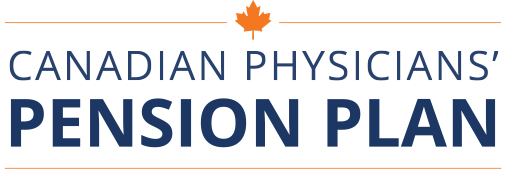
It is my belief that we have been doing it wrong for all these years. Given the high rate of physician burnout and its link to financial stress, we, as physicians can no longer neglect our own personal financial management. What we were told in the past by our financial “advisors” or accountants about retirement planning no longer serves us well in the current tax environment. Which is what led to the advent of the Canadian Physicians’ Pension Plan.
For a variety of historical reasons, Canadian physicians have never been, until very recently, offered access to high-quality registered pension plans. For over a century, because doctors were independent professionals and not employees of the Province, we did not qualify to participate in a pension plan. Starting in the late 1990s until the early 2000s provinces gave doctors the right to incorporate a Medicine Professional Corporation (“MPC”) and those who did so, while paying themselves a salary from that MPC, were finally allowed to enjoy all of the benefits of being in a true registered pension plan. A true registered pension plan provides a stable, predictable, reliable retirement solution that an RRSP cannot deliver.
Unfortunately, at the start of the XXIst century it was (until 2014) slightly more tax-effective to pay some corporate tax and distribute retained earnings in the form of dividends instead of paying a salary. Relying on this accounting advice, large numbers of physicians opted for a dividends-only approach to take cash out of their MPC for daily living and thus shunned T4 income (e.g. salaries and bonuses).Since January 1, 2014, the tax pendulum has swung back in favour of some level of salary, and those who adopted this approach were now able to make contributions to a registeredpension plan. Unfortunately, no medical associations (nor the so-called “physician financial organization”) offered a true pension solution for its membership.To remedy this state of affairs, theCanadian Physicians’ Pension Plan(“CPPP”) wascreated in December 2021. The CPPP is a physician-led organization that seeks to fill thegap left by medical associations and financial institutions and provides each MPC in Canadathe ability to offer a true defined benefit (DB) pension. The legal mechanism used is quitesimple: each MPC sets up a Personal Pension Plan (“PPP”) that is registered independentlywith the Canada Revenue Agency. Each such PPP can then join the “Federation” and enjoyeconomies of scale in terms of investment management fees, and the progressiveelimination of any annual administration fees. Most of my medical colleagues actually thinkthat an RRSP is a Registered Pension Plan like a PPP. In reality,the RRSP is a savings accountoffered bythe government because true pension plans have been largely abandoned byprivate corporations. Unfortunately, the RRSP is not the gold standard of a Defined Benefit(DB) planlike a PPP.This efficient structure provides Canadian physicians with a safe, predictable, reliableretirement income solution. In addition, theCanadian Physicians’ Pension Planis anunparalleled solution for tax and estate planning (through its inter-generational wealthfeature).As Canadians, we know we pay very high rates of taxes. Taxes are the number one destroyerof wealth. The key problem facing doctors is the highly tax-ineffective useofthe MPC as theprimary mechanism for retirement savings. Put-simply, the MPC’s pre-tax income earned(say from OHIP) gets taxed in the hands of the MPC and is further exposed to two (2) othertaxes before being taxed a fourth time in the hands of the physician when received. Pursuingthis classic savings strategy destroys a large part of the doctor’s wealth as explained below.
The first tax is the one facing the MPC on its active business income. In Ontario in 2023, that tax starts at 12.2% and jumps to 26.5% once the MPC’s taxable income (from active business activities only) exceeds $500,000. If retained earnings not distributed as a dividend to the physician are saved by the MPC, any growth is no longer active business income but rather passive corporate income.
The second tax is on interest income or foreign dividends, which can be as high as 50.17%. A third tax that now exists since 2019 is called the Tax On Passive Income (“TOPI”) and it kicks in if the MPC has passive income in excess of $50,000. Once this $50,000 ‘safe’ amount is reached, every additional dollar of corporately-earned passive income eliminates $5 of the $500,000 small business allowance where the tax rate is currently only 12.2%. In other words, if the MPC earned $150,000 in passive income, the entire $500,000 small business deduction allowance would be eliminated, exposing all active business income earned at the 26.5% tax rate! Thus, TOPI increases the taxes owing by $71,500 simply because the MPC earned too much passive income. Finally, it is not enough for the physician to accumulate wealth in the MPC, at some point that money needs to be repatriated into the hands of the doctor so that it may be spent. This is normally done via a dividend/salary, and under tax principles, this dividend/salary is then taxed in the hands of the physician on the personal tax return. This is Tax no. 4.
Now, let’s imagine the MPC has set up a PPP and has joined the CPPP. OHIP income earned by the MPC that is contributed to the CPPP is sheltered from the first tax be cause all corporate contribution to the PPP are legitimate corporate tax expenses. This means that Tax No. 1 does not apply on active business income so contributed. Once these contributions are invested inside the CPPP, any growth is further sheltered from ongoing taxation since the CPPP is a tax-sheltered investment account under CRA rules. Therefore, Tax No. 2 (e.g. 50.17% on interest income etc.) does not apply either. The assets can accordingly grow at a much more rapid pace. As for TOPI (Tax No. 3), it also does not apply either because the passive investments within the CPPP are not considered corporate assets of the MPC. Thus, the extra $71,500 tax bill described in the example above does not apply to the doctor using the CPPP.
The benefits do not stop here. Under the CPPP structure, there are seven additional tax benefits for the corporation. Without going into further details, the 2 most powerful are 1) Purchase of past service and 2) Terminal Funding. These two (out of 7) can tremendously reduce corporate taxable income. With the help of compounding and time, it is fairly easy to see that the doctor using the CPPP will have significantly more wealth to enjoy in retirement than the one using the traditional way of saving via the corporate entity or via the RRSP.
What about the taxation in the hands of the retired doctor? While the monthly pension benefit paid to the retired physician is taxed as “ordinary income” one should not automatically assume that this future income will always be taxed at the highest marginal rate (currently 53.5% in Ontario). Firstly, all recipients of pension benefits can claim an annual non-refundable tax credit of $2,000 on their tax return if they receive pension income. More importantly, a doctor who has a spouse in retirement (especially one with no or little income) can ‘pension income split’ the benefits received from the CPPP and save a lot of tax.
For example, if Doctor A received $200,000 of annual CPPP pension income and did not split it with a spouse, the total tax bill on that pension would be about $67,008 (Ontario/Federal tax in 2023). By moving $100,000 (or 50%) of that pension to the tax return of the spouse with no income, the couple now pays total taxes of $44,256. This simple paper transaction at tax time has saved the couple $22,752 annually! It also took the physician from an average tax rate of 33.5% into a 22.13% average tax rate on this pension income. For an emergency doctor earning an average of $1,000 per shift, this represents 22 extra days of paid leisure time each year. Finally, and while not all physicians might wish to opt for this, should a doctor decide to retire outside of Canada and opt to become a non-resident of Canada for tax purposes, the tax on the $200,000 pension would be 15% in most countries (or $30,000). That’s a $37,008 tax savings every year for that level of pension.
Some of my colleagues have inquired as to the reason why this pension program does not receive subsidy by the government. Because physicians in Canada are self-employed and independent contractors, the provincial governments do not consider us as employees, and therefore such governments will not contribute to a pension plan for physicians. In fact, this is arguably a very good thing. Contributions made by our own MPCs are fully deducted from our corporate income and are strictly controlled by our MPC. This is crucial for us to retain full control of our funds which can then be passed on from generation to generation in an inter-generational wealth transfer strategy with family members on the payroll of our MPC. If provincial governments were to contribute to our pension plans, inter-generational wealth transfer would not be possible since all remaining unused funds in our plan would be distributed not to our family members but to other plan members (other physicians in the province). Government subsidy, in this context, would destroy one of the most powerful features of a corporately owned private registered pension plan.
By granting our MPC access to seven deductions that most Canadian physicians can only dream of under RRSP rules, the government is indirectly providing us with a large subsidy. Canadian physicians finally have their own pension solution. The century-long wait to be treated like respected healthcare providers in the provinces, when it comes to pensions, is finally over.
